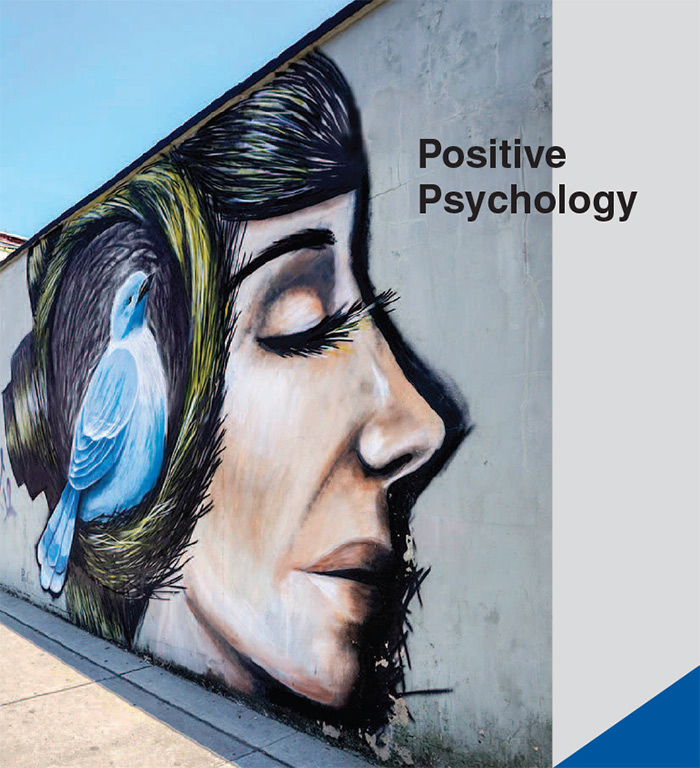Positive psychotherapy (PPT) is a therapeutic endeavor within positive psychology to broaden the scope of traditional psychotherapy. Its central premise is to assess and enhance positive resources of clients, such as positive emotions, engagement, relationships, meaning, and accomplishments, in treating symptoms. Amplifying these positive resources may serve clients best not when life is easy, but when life is difficult, because the human brain is hard-wired to attend and respond more strongly to negatives than to positives (Baumeister, Bratslavsky, Finkenauer, & Vohs, 2001). Psychopathology exacerbates this propensity. Therefore, accentuation of strengths, along with amelioration of symptoms, is a better therapeutic approach. Psychotherapy, over and beyond placebo, is effective and fares better in the long run than medication (Seligman, 1995; Castonguay, 2013; Leykin & DeRubeis, 2009). Its efficacy, however, is examined by a reduction of symptomatic stress, not by the cultivation of well-being. Clients seeking psychotherapy may not articulate explicitly, but do they only want to be less sad, anxious, angry, or ambivalent? They want their lives filled with satisfaction, engagement, meaning, connection, and intrinsically rewarding pursuits. But, these pursuits are typically not the focus in psychotherapy. However, these often are the focus of multi-million dollar self-help recipes and remedies that may produce ephemeral change, but enduring behavioral change remains elusive. Furthermore, the typical role of the psychotherapist is to assess dysfunctions and deficits, and formulate them into diagnosable disorders. This role not only maintains the stigma against mental health, but it also renders psychotherapy as a place to discuss troubles and transgressions. Psychotherapy is not generally known to be a place where growth is fostered, where potential abilities, skills, and talents are explored, acknowledged, and enhanced. Compared to the baby boomer generation whose parents were scarred by traumas of world wars, poverty, and social inequalities, the current clientele of psychotherapy is likely to be the Millennials and Generation Z. These are young people who are largely urban, culturally diverse, ambitious, socially active, and digitally and visually connected in real time with trends and twists of every moment. They may be less interested and invested in examining themselves largely through Euro-centric diagnostic lens and labels. Focusing exclusively either on negatives or positives might be easier, but striking a balance between the two is difficult, and not many therapeutic approaches have done so. PPT is unique in this regard as it attempts to strike a balance by engaging clients in discussions, for instance, about an injustice done, while also focusing on recent acts of kindness. Similarly, along with insults, hubris, and hate, experiences of genuine praise, humility, and harmony are deliberately elicited. Pain associated with trauma is empathetically attended to, while also exploring the potential for growth. The aim of PPT is to integrate symptoms with strengths, attachment with isolation, risks with resources, weaknesses with values, and hopes with regrets, in order to understand the complexities of psychological problems utilizing the positives to treat negatives. The integration does not come at a cost of dismissing, denying, or minimizing the client’s concerns. Nor is this integration necessarily meant to create a new genre of psychotherapy. The goal is to establish an evidence-based therapeutic approach that gives equal attention to strengths as is given to symptoms. PPT is based on three assumptions: First, clients inherently aspire to growth, fulfillment, and happiness, not just to avoid misery, worry, and anxiety. Psychopathology engenders when the growth is thwarted. Second, positive resources such as strengths are authentic and as real as symptoms and disorders. These are not defenses, Pollyannaish illusions, or clinical by-products of symptom relief that lie at the clinical peripheries without needing attention. The final assumption is that effective therapeutic relationships can be formed through the discussion and manifestation of positive resources. These assumptions are operationalized in Seligman’s conceptualization of well-being (Seligman, 2002 & 2012). Seligman sorts well-being into five scientifically measurable and manageable components: 1) positive emotion, 2) engagement, 3) relationships, 4) meaning, and 5) accomplishment, with the first letters of each component forming the mnemonic PERMA (Seligman, 2012). This list of elements is neither exhaustive nor exclusive, but it has been shown that fulfillment in three elements (positive emotions, engagement, and meaning) is associated with lower rates of depression and higher life satisfaction (Bertisch et al., 2014; Asebedo & Seay, 2014).
Evidence
Following an initial randomized control trial (RCT) study with moderately and severely depressed clients (Seligman, Rashid, & Parks, 2006) almost ten years ago, feasibility and empirical validation of PPT has been explored through 14 studies, including eight randomized controlled studies, nine published in peer-reviewed journals, and three dissertations. Seven of these studies treated community samples from Canada, China, Chile, France, Iran, and the United States, addressing clinical concerns including depression, anxiety, borderline personality disorder, psychosis, and nicotine dependence. An outcome measure, Positive Psychotherapy Inventory (PPTI), to assess the specific active ingredients of PPT has been devised and validated (Guney, 2011). In summary, PPT is effective as a protocoled treatment for a variety of clinical concerns in symptom reduction as well as in enhancing well-being, and works as effectively as well-established treatment protocols (for review of these studies, see Rashid, 2015).
PPT: Structure and Process
From the onset, the therapist builds a congenial and positive relationship with clients by encouraging the clients to introduce themselves through a real-life story that shows them at their best (Rashid & Ostermann, 2009). Through Gratitude Journals, an ongoing exercise, clients begin noticing, acknowledging, interpreting, and writing about positive experiences and events in their lives. Next, clients compile their signature strengths profiles that incorporate collateral data from multiple resources regarding character strengths. The character strengths in PPT are based on the Values in Action model (Peterson & Seligman, 2004). Clients learn to translate their strengths into concrete actions and habits that target their presenting symptoms and psychological distresses. They explore nuanced and adaptive uses of their signature strengths, including over (excess) and under (a lack of) use of their signature strengths, especially in relation to their presenting problems. For example, a client with low mood, isolation, and procrastination may not be using the strength of zest and vitality sufficiently. In contrast, another client, making spontaneous decisions and being hyperactive in domains of life, might be overusing zest and might benefit from a dose of prudence and self-regulation. In addition, clients learn practical wisdom (Schwartz & Sharpe, 2010). Practical wisdom is the know-how of strengths, and includes developing awareness regarding an adaptive and contextualized use of salient strengths (also known as signature strengths). For example, frequent usage of signature strengths of kindness, forgiveness, and social intelligence for a depressed client could actually maintain her symptoms. PPT teaches the client to explore specific situations where use of some of these strengths doesn’t allow her to assert her legitimate needs. She may benefit from using and developing her lesser strengths, such as courage and perspective that may equip her with skills to develop perspective regarding specific situations, and a balanced use of strengths that meet her needs. Overtime, clients grasp the notion of nuanced and contextualized use of strengths and start using them adaptively. With this skill harnessed, client confidence increases gradually and they are invited to explore negative or open-book memories. These are adverse and unprocessed experiences that may range from a pun or verbal punch delivered by a sibling or friend, to perceived or real criticism from a parent or partner, and often evolve into specific cognitive or emotional rigidities. Without minimizing or avoiding the pain associated with these adverse experiences, clients learn to use their strengths, such as perspective, self-regulation, curiosity, and forgiveness, to deal with them adaptively. This is based on the premise that adverse experiences can also be a source of growth (Pennebaker, 1997; Bonanno & Mancini, 2012). Throughout the course of the therapy, regular discussions about small but meaningful positive experiences and positive emotions of everyday life help clients awaken and widen their cognitive awareness to spot, acknowledge, and savor good experiences to improve their day-to-day well-being (Fredrickson, 2009). In the final few sessions, PPT exercises primarily focus on fostering positive relationships, intimate and communal, and the search and pursuit of meaning and purpose.
Flexibility and Caveats
Despite the title, the focus of PPT is not exclusively on the positive aspects of human experience. It would be na.ve and utopian to conceive of a life without negative experiences. As such, PPT does not deny negative emotions, nor does it encourage clients to see the world through rosecolored glasses. PPT validates these experiences and gently encourages clients to explore their meanings and be cognizant of potential growth from them. However, this potential growth is not explored or encouraged by offering empty platitudes. The therapist creates a milieu of warmth, understanding, and goodwill, and listens mindfully to help clients explore, reflect and discuss, and integrate both negative and positive aspects of the personality toward deeper self-understanding and self-development. When and if unavoidable negative events and experiences surface, they are dealt with using standard clinical protocols. Some clinicians or clients may find the thrust of PPT as prescriptive. Converging lines of research document the benefits of gratitude, kindness, altruism, and forgiveness, and are describing human experiences. Therefore, despite having constructs that historically have been part of religious and spiritual traditions, PPT incorporates them on their empirical merit. Moreover, PPT is not, nor should it be, perceived as a panacea, nor is it appropriate for all clients in all situations. Simply put, PPT is not a “one size fits all” approach. Finally, in PPT, therapists should not expect a linear progression of improvement, as the motivation to change long-standing behavioral and emotional patterns fluctuates during the course of therapy.
References


